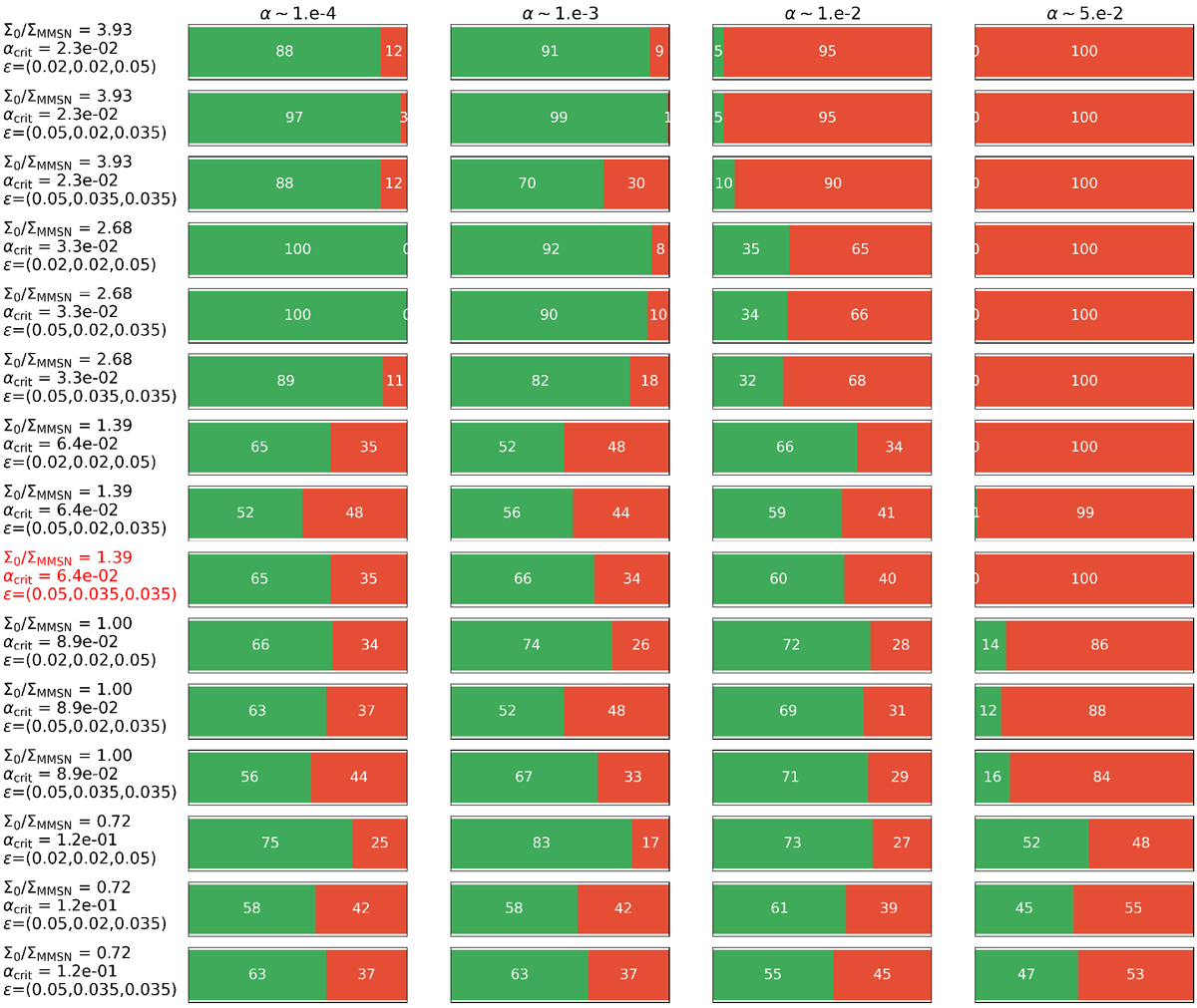Fig. 3

Download original image
Number of successful creations of the Kepler-223 resonance chain for various initial conditions, with varying initial separations and surface densities. For each initial setup, four turbulence strengths α were considered. The green bar denotes successful formations. Generally, a larger turbulence strength leads to fewer successful runs. For each setup, there is a critical value αcrit (cf. Eq. (19)), for which stronger turbulence significantly hinders the creation of the resonance chain (Batygin &Adams 2017). This is depicted in the plot. This critical value decreases with increasing gas surface density, which is also the case for the number of successful runs for an increasing surface density at constant α (cf. Eq. (3)). The setup marked in red did not reproduce the Kepler-223 resonance chain without turbulence, but it does not differ significantly from those that did when the effects of the turbulent disk were considered, indicating that turbulence is a necessary ingredient for this particular setup. This remains to be investigated in future work.
Current usage metrics show cumulative count of Article Views (full-text article views including HTML views, PDF and ePub downloads, according to the available data) and Abstracts Views on Vision4Press platform.
Data correspond to usage on the plateform after 2015. The current usage metrics is available 48-96 hours after online publication and is updated daily on week days.
Initial download of the metrics may take a while.


